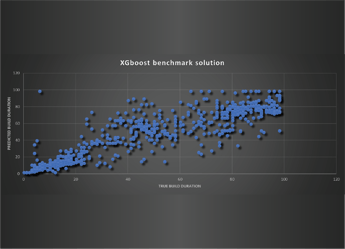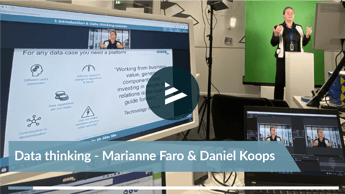Smart IT: Beyond the building block
To think of something not yet invented can be tricky. We are swamped with nice IT building blocks: sensor modules, Linux computers ‘in-the-box’ and bits of software. There’s definitely no shortage in this area. Each bit of hardware communicates via software with other hardware – cars are full of it, for example. The data persistently filters through the software and hardware. If you are able to analyze and combine this data into smart features can lead to a product experience – or in other words an “experience” or “smart device”. And eventually, that means sales for the maker.
In everything around us we see potential intelligence we would like to use to make things smarter or to control them. Data volumes are unlimited and instantly available. We know it’s possible, and slowly but surely we’ll get there. There are few houses as yet that are really “smart”, and self-driving cars still have a steering wheel that we like to hold on to.
At the same time we’re devising the breakthrough applications of the Internet of Things (IoT), we’re also struggling with the components: the bits of hardware that have to be ever smaller and more energy-efficient and the software that for the time being can only be made by people with years of training behind them. With traditional IT network protocols, it’s also hopeless trying to tackle thousands of sensors. So things have to be different.
However, experiments are rife. Every city has its building that is “almost smart”. We organize competitions for soccer-playing robots and drive electric motorbikes that spit out data every second, from which we create nice pictures that can be accessed on the internet. And as we speak, there is sure to be a car driving around somewhere on its own.
Analytics
The key lies in analytics. Being smart entails knowing what’s happening, which data is useful and which patterns are involved. There’s no shortage of data, but up to now it has needed people to interpret it, unless we are dealing with extremely Big Data sets, for which we can use strong deep-learning computers. If the patterns are relatively simple, then machine learning can be helpful.
Platform thinking
By definition, an IoT solution cannot be a one-off solution. We keep on experimenting and expanding. The solution must be able to absorb the growth in functionalities, devices, data volume, data sources and various applied technologies. The construction needs firm foundations, yet must also be able to provide direct functionality. It must integrate with the current hardware and software environments, and from there grow toward the applications. Another difficulty is that the IoT platform cannot be bought; although the hardware and software Lego can, (for the most part). e.g. sensors, operating systems, connectivity, an analytics engine and components like a database and a rules engine.
"Less ITIL, process and governance — and more system thinking, innovating and build-dispose-and-rebuild."
Traditional IT
Within traditional IT departments, we have insight into a significant part of the set of building blocks. But the question is whether we are able and willing to apply this insight to the primary product or process of our (enterprise) customer?
We would then have to top up our backpack with a totally new set of building blocks: bits of hardware and software. This would mean less ITIL, process and governance – and more systems thinking, innovating, and build-dispose-and-rebuild. Who dares take the challenge?






